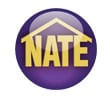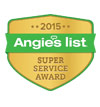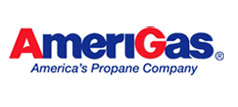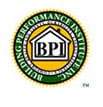Keep your family safe this summer by following these tips from the American Academy of Pediatrics (AAP) and your friends at ServiceMark Heating, Cooling & Plumbing. This is part of a special summer series we are posting, so be sure to follow our blog and get helpful tips and reminders each week. This week’s blog focuses on two timely themes – Bug Safety and Playground Safety:
BUG SAFETY
- Don’t use scented soaps, perfumes or hair sprays on your child.
- Avoid areas where insects nest or congregate, such as stagnant pools of water, uncovered foods, and gardens where flowers are in bloom.
- Avoid dressing your child in clothing with bright colors or flowery prints that could attract insects.
- To remove a visible stinger from skin, gently back it out by scraping it with a clean credit card or your fingernail.
- Combination sunscreen/insect repellent products should be avoided, because sunscreen needs to be reapplied every two hours, but the insect repellent should not be reapplied.
- Use insect repellents containing DEET when needed to prevent insect-related diseases. Ticks can transmit Lyme Disease, and mosquitoes can transmit West Nile Virus and other viruses.
- The current recommendation for children older than 2 months of age is to use 10% to 30% DEET. (DEET should not be used on children younger than 2 months of age.)
- The effectiveness of 10% versus 30% DEET is similar, but the duration is what varies. 10% DEET provides protection for about 2 hours, and 30% protects for about 5 hours. Choose the lowest concentration that will provide the required length of coverage for your need.
- The concentration of DEET varies significantly from product to product, so read the label of any product you purchase. Children should wash off repellents when they return indoors.
- As an alternative to DEET, Picaridin has become available in the U.S. in concentrations of 5% to 10%.
- When outside in the evenings or other times when there are mosquitoes present, cover up with long-sleeve shirts, pants and socks to prevent bites.
PLAYGROUND SAFETY
- The playground should have safety-tested mats or loose-fill materials like shredded rubber, sand, wood chips, or bark. Material depth is important, too. A depth of at least 9 inches (6 inches for shredded rubber) is recommended. The protective surface should be installed at least 6 feet in all directions from the equipment – even more for swings and slides.
- Equipment should be carefully maintained. Open “S” hooks or protruding bolt ends can be hazardous.
- Swing seats should be made of soft materials such as rubber, plastic or canvas.
- Make sure children cannot reach any moving parts that might pinch or trap body parts.
- Never attach ropes, jump ropes, leashes, or similar items to play equipment – children can strangle on these. If you see something tied to the playground equipment, be sure to remove it or call the playground operator to remove it.
- Make sure your children remove biking helmets and anything looped around their necks.
- Metal, rubber and plastic products can get very hot in the summer sun, so make sure slides and equipment are cool enough to prevent children’s arms and legs from getting burned.
- Do not allow children to play barefoot on the playground.
- Parents should supervise children on play equipment to make sure they are safe.
- Parents should NEVER purchase a home trampoline or allow children to use a home trampoline because of the risk of serious injury even when supervised.
- Surrounding netting offers a false sense of security and does not prevent many trampoline-related injuries.
- If children are allowed to jump on any trampoline, they should be supervised by a responsible adult, and only ONE child should be on the trampoline at a time – 75% of trampoline injuries occur when more than one person is jumping at a time.
No matter what you do outside, keep your cool reliably when inside! If you experience problems with your home’s air conditioning system, contact ServiceMark Heating, Cooling and Plumbing at 1-800-474-5200 or visit www.servicemarksolutions.com. Be sure to watch for more Summer Safety Series tips coming soon!
Source: https://www.aap.org/en-us/about-the-aap/aap-press-room/news-features-and-safety-tips/pages/Summer-Safety-Tips.aspx#sthash.T8vR3F5Q.dpuf












 Company
© 2016 ServiceMark • All rights reserved HIC #PA100114
Company
© 2016 ServiceMark • All rights reserved HIC #PA100114 